- Apply
- Visit
- Request Info
- Give




Scroll

Research shows that play is central to young children's learning. During play, children use language, develop social skills, solve problems, practice motor tasks, and engage in creative thinking. Adults can support children's learning through play by:
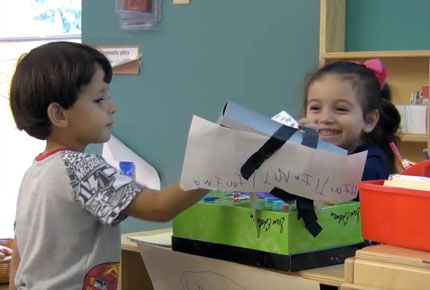 Grocery Store to Craft Market: Building Background Knowledge Through Dramatic Play (11:38)
Grocery Store to Craft Market: Building Background Knowledge Through Dramatic Play (11:38)
A classroom dramatic play center provides a unique opportunity to build children’s background knowledge, which can lead to richer pretend play experiences. In this video, two preschool teachers describe how they engaged families in deciding on the focus of their new dramatic play center, and then involved children in building the center over time. Through their grocery store play center, the children developed an understanding of commerce. They used this new knowledge to develop a real craft market in their classroom - and invited their peers from other classrooms to visit.
See video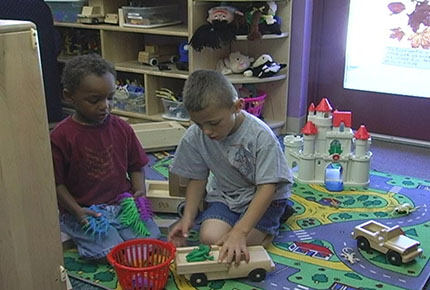 The Importance of Play (5:20)
The Importance of Play (5:20)
Research shows that play has an essential role in children's learning. In this award-winning video from the e-clip series, Dr. Jeffrey Trawick-Smith of Eastern Connecticut State University discusses the importance of play and advises early childhood professionals to look at several elements of children's play, including engagement in make-believe play, social interaction during play, and play complexity. Teachers who enhance children's play can help promote children's development in a variety of domains.
See more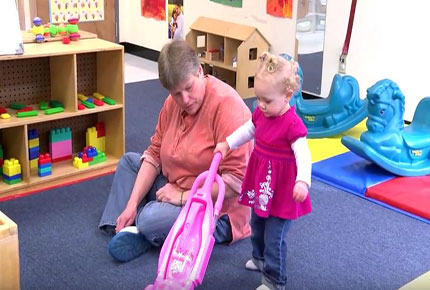 Supporting Children's Learning in Dramatic Play Centers (Series)
Supporting Children's Learning in Dramatic Play Centers (Series)
This series includes an introductory video on the importance of pretend play, as well as several videos featuring examples of dramatic play centers. In these videos, teachers demonstrate a clear understanding of children’s developmental needs and capabilities, and use their dramatic play centers to provide opportunities for learning across a variety of domains. Videos include:
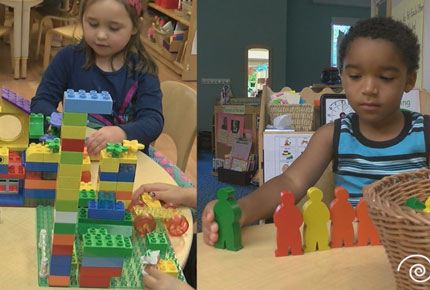 What Makes a Good Toy? Lessons Learned from 10 Years of the TIMPANI Toy Study
What Makes a Good Toy? Lessons Learned from 10 Years of the TIMPANI Toy Study
From 2010 - 2019, the CECE studied how different kinds of toys affected children's play. This video and accompanying handout describe the lessons learned from that study and outline the key qualities that make a toy more likely to inspire creativity, problem-solving, social interaction, and verbalization during play.
See video and handout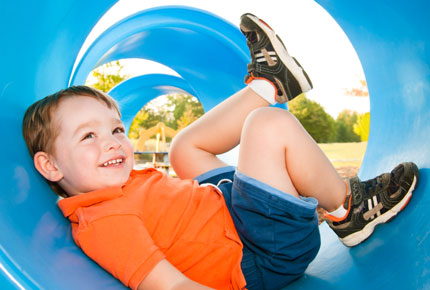 Supporting Children's Physical and Outdoor Play (Videos and Printed Tips)
Supporting Children's Physical and Outdoor Play (Videos and Printed Tips)
This series includes five videos that focus on different ways to support children's physical, social, cognitive, and language development through physical and outdoor play. In addition, a series of printed Teacher Tips provide ideas that teachers and caregivers can implement with infants, toddlers, and preschoolers.
See videos and printed materials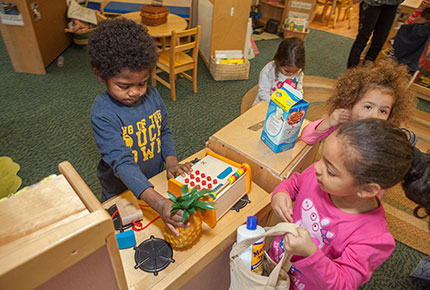 TIMPANI Toy Study (series)
TIMPANI Toy Study (series)
The Center's annual TIMPANI (Toys that Inspire Mindful Play and Nurture Imagination) Toy Study researches how young children in natural settings play with a variety of toys and identifies toys that best engage children in intellectual, creative, social, and verbal interactions in preschool classrooms. This series of ten videos includes interviews with teachers and researchers about qualities that make toys strong choices for preschoolers.
Learn more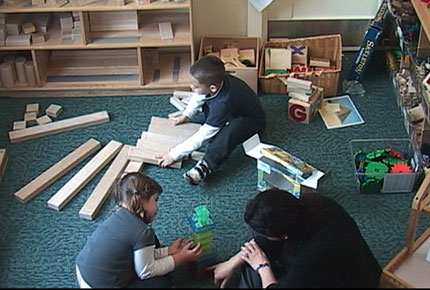 The Relationship of Teacher-Child Interactions in Preschool Play to Young Children's Mathematical Abilities
The Relationship of Teacher-Child Interactions in Preschool Play to Young Children's Mathematical Abilities
Math ability in preschool is one of the best predictors of later school success–research suggests it is a better predictor than early literacy skills. While many studies have found strong relationships between young children’s play and literacy, studies of teacher interactions in play and mathematics learning have not been conducted. This video describes findings from a study aimed at identifying classroom interventions in play that are associated with math achievement in three- and four-year-olds. The findings indicate that how teachers interact with and communicate with children while they play has powerful impacts on children’s mathematical learning.
See more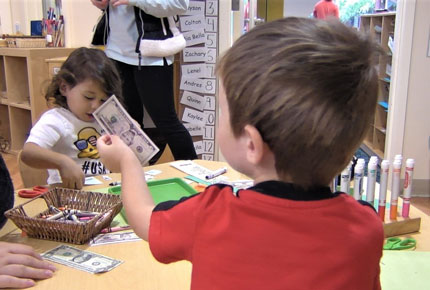 Building Children's Background Knowledge: Using Money in Dramatic Play (2:06)
Building Children's Background Knowledge: Using Money in Dramatic Play (2:06)
Preschool teacher Karla Alamo describes how she helped children develop an understanding of money to enhance their experience in the new dramatic play center. By allowing them to explore real money and encouraging them to create play money, Karla ensured that children had the background knowledge needed to fully participate in the classroom’s grocery store.
This Teaching Strategies video provides an example of incorporating social studies in the preschool classroom and helping children develop an understanding of commerce, consumption, and economic systems by exploring using money to buy and sell.
See more Cultural Influences on Children's Play (1:57)
Cultural Influences on Children's Play (1:57)
In this expert interview, Dr. Patricia Ramsey describes how children's play preferences reflect the values they have been raised with. Culture influences how children communicate during play, the roles they take on, and how cooperative their play is. Dr. Ramsey gives suggestions to ensure that children from different backgrounds have support and materials to engage in their play preferences.
See more